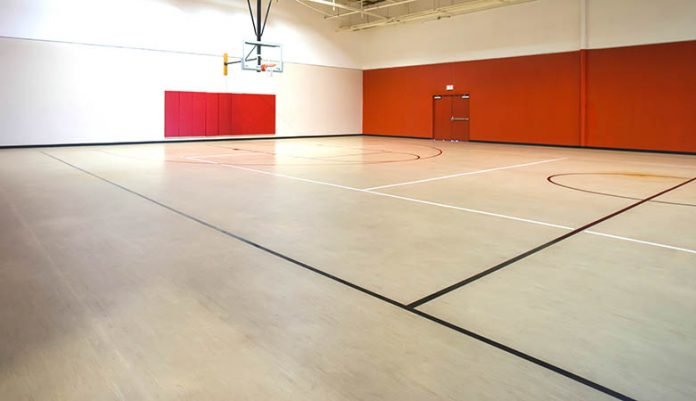By Stefanie Jackson – Northampton schools Superintendent Eddie Lawrence sent home a letter to parents Nov. 5 notifying them that low levels of mercury, “well below” permissible exposure limits set by state and federal agencies, had been detected in the Northampton High School gym floor, which already had been identified for replacement during upcoming renovations.
“(The) Northampton County School Board and I are committed to providing a safe environment for our students and staff. … Thank you for your support and understanding,” Lawrence wrote.
The mercury in the rubberized gym flooring was found during campuswide testing for various hazardous materials, part of the process to determine the scope of the renovations needed at the high school. The air in the gym also tested positive for mercury at levels below the permissible exposure limit.
Mercury is a heavy metal that exists naturally in the Earth but is toxic to humans. Mercury, in its silver liquid form, is widely known for its use in thermometers before it was largely replaced by alcohol (which is dyed red to be easily visible), and later, digital thermometers.
Other products that may contain forms of mercury include button cell batteries, compact fluorescent lightbulbs, dental amalgam fillings (which are silver colored), and vaccines containing the preservative thimerosal. Small amounts of mercury are also present in fish such as tuna.
The rubber-like flooring in the NHS gym, which was popular from the 1960s to the early 2000s, contains small amounts of mercury due to the introduction of a catalyst called phenyl-mercuric-acetate during installation. The flooring material begins as a liquid and is poured, and the catalyst helps give the finished product its rubbery texture.
Testing NHS gym flooring and air samples showed concentrations of 0.18 micrograms of mercury per cubic meter, below the permissible exposure limits of 0.3 micrograms per cubic meter set by the Virginia Department of General Services, and 0.8 micrograms per cubic meter set by the U.S. Environmental Protection Agency (EPA), Lawrence’s letter stated.
Northampton County Public Schools is consulting with a certified industrial hygienist to develop a monitoring plan that will include regular air quality testing to ensure mercury levels are not exceeding permissible exposure limits.
A certified industrial hygienist typically has a bachelor’s degree or higher and has been trained to recognize health hazards, test the environment for health hazards, determine if there is risk to human health, and recommend ways to control the health hazard or protect others from it.
NCPS is consulting with its architectural firm and construction manager to determine how to expedite the replacement of the gym floor. Additional testing will be done to determine if the subfloor also needs to be replaced.
The presence of mercury in rubberized flooring in gyms and multipurpose rooms has been found in schools across the U.S.
An information sheet released by the New Jersey Department of Health (NJDOH) in 2020 states that children are most likely to be exposed to mercury in school flooring by inhaling mercury vapors released into the air. “Additionally, mercury is minimally absorbed by the body through ingestion or skin contact,” the document states.
Mercury toxicity or poisoning can be caused by inhaling excessive amounts of mercury. Symptoms may include metallic taste, vomiting, difficulty breathing, coughing, and swollen or bleeding gums. Treatment may include prescription medication to remove mercury and heavy metals from the body, according to the National Institutes of Health or NIH.
However, exposure to mercury levels up to 0.8 micrograms per cubic meter of indoor air is not expected to cause “any harmful effects among children,” the NJDOH stated.
That maximum contaminant level was calculated based on “the most vulnerable age in schools, 3-year-olds,” accounting for their body weight and increased inhalation rate and assuming exposure for eight hours a day, 180 days a year (the length of a typical school year), over the course of a lifetime.
According to the NJDOH, workplace studies have linked adverse health effects to exposure to mercury at an actual concentration of 25 micrograms per cubic meter – more than 30 times the EPA’s permissible exposure limit.
For more information on mercury and its effects on health, visit the Virginia Department of Health website https://www.vdh.virginia.gov/epidemiology/epidemiology-fact-sheets/mercury/, call VDH at 804-864-8127, or email [email protected].



